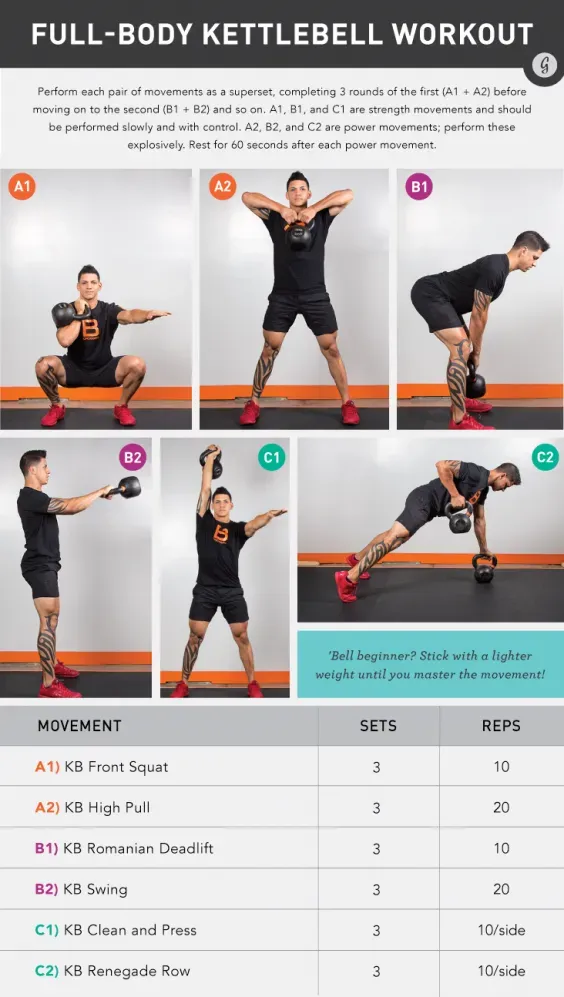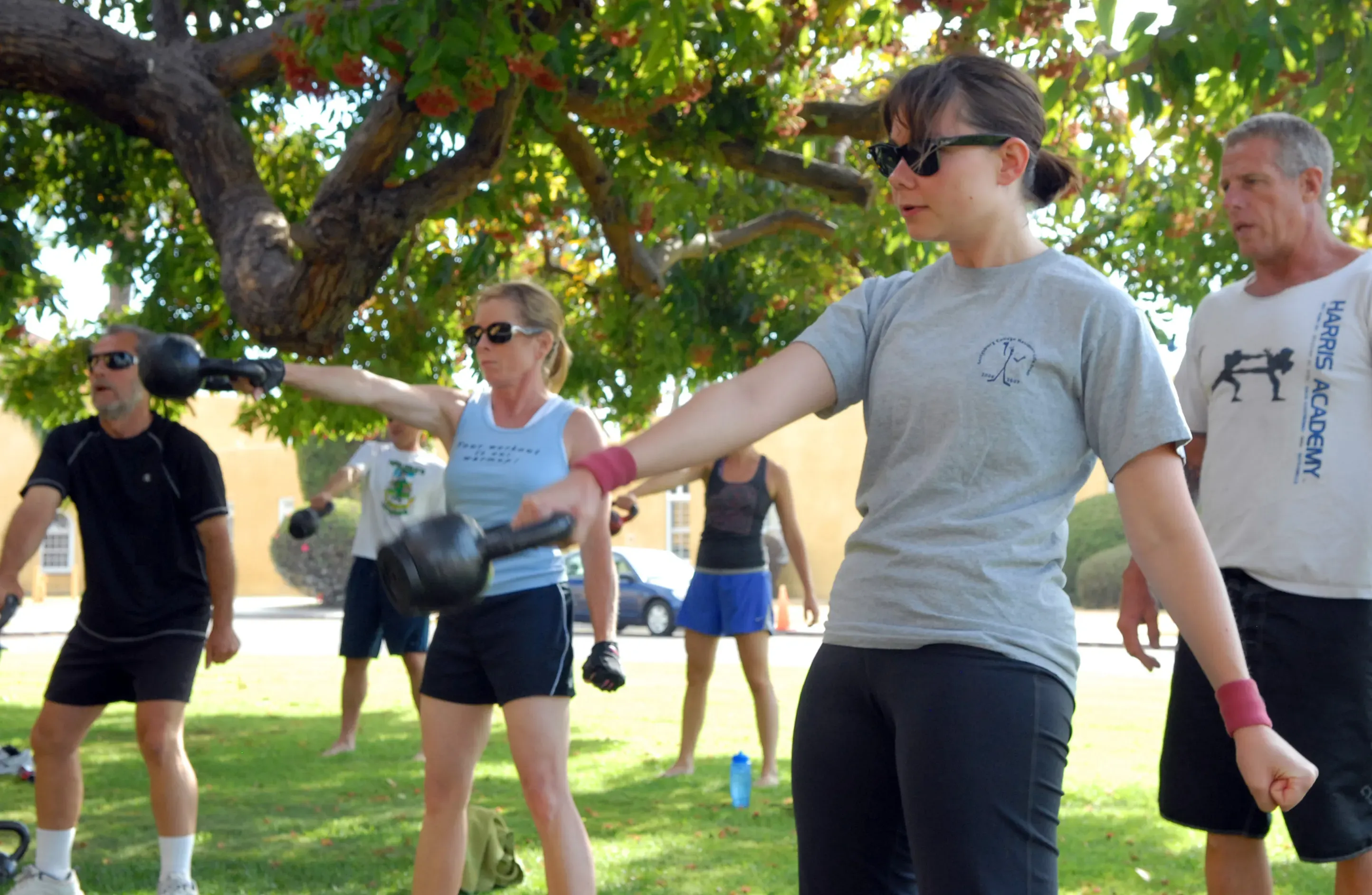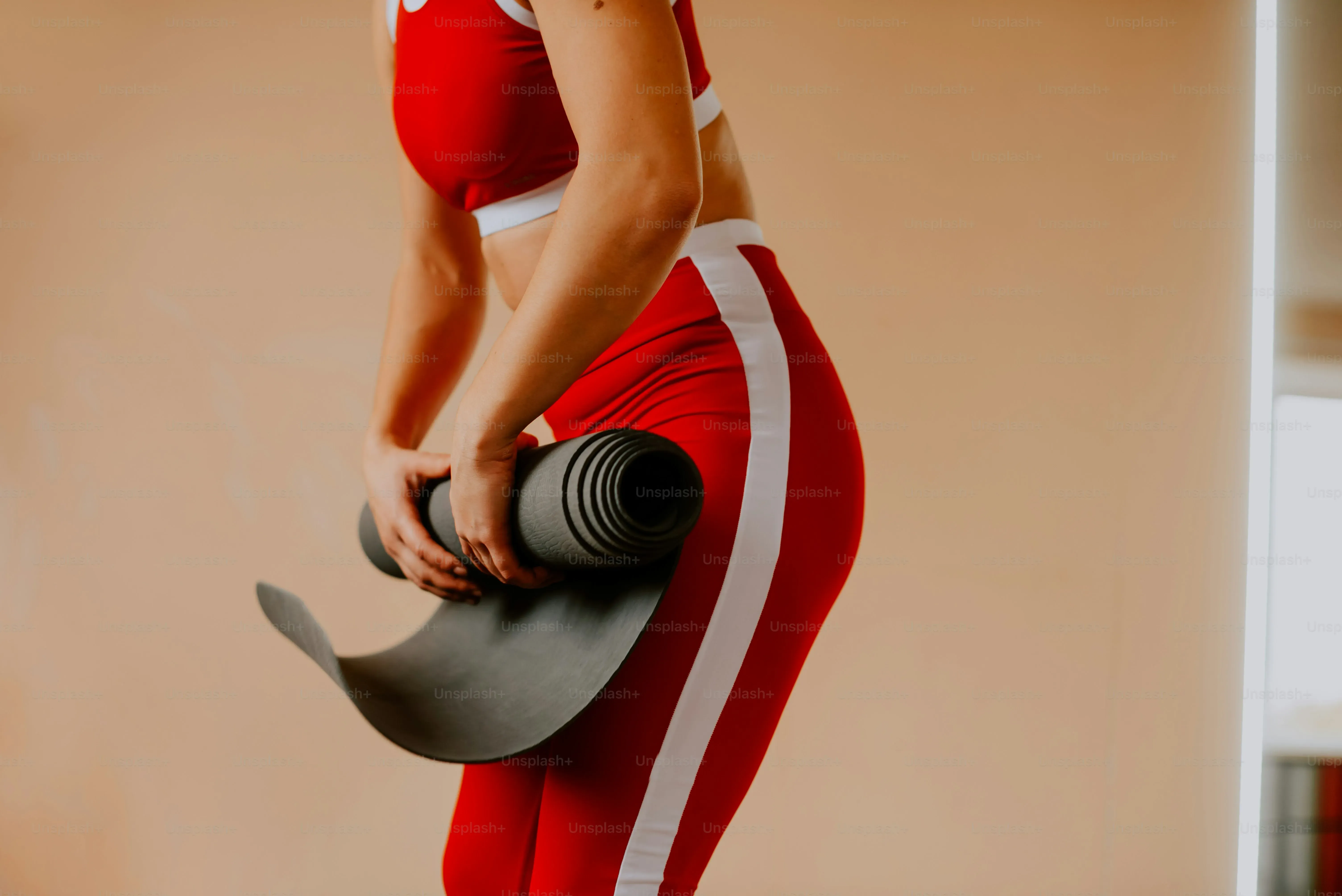Table of Contents
Tired of spending hours in the gym, hopping from machine to machine, feeling like you're not making real progress? Maybe you just don't have the time for complex routines. Let's cut through the noise. If you want a single tool that can build strength, boost power, and ramp up your endurance without needing a ton of space or equipment, the kettlebell is your answer. Specifically, a solid workout kettlebell full body routine can be a game-changer.
Benefits of a Full Body Kettlebell Workout

Benefits of a Full Body Kettlebell Workout
Maximum Bang for Your Buck
Let's be honest, time is short for most of us. You don't have hours to dedicate to the gym every single day. This is where the magic of the workout kettlebell full body approach really shines. Instead of hitting one muscle group, resting, then moving to the next, kettlebell movements are inherently compound. Think swings, cleans, and presses – they demand coordination and power from your legs, hips, core, back, and shoulders, all at once. It's incredibly efficient, hitting multiple targets with a single stone, or rather, a single bell.
Strength and Sweat in One Go
One of the coolest things about the Benefits of a Full Body Kettlebell Workout is how seamlessly it blends strength training with cardiovascular conditioning. A heavy set of swings or a series of clean and presses will definitely challenge your muscles, but the dynamic nature and the need for continuous movement also get your heart rate soaring. It's not just lifting weights; it's lifting weights *while* moving explosively and controlling that movement. This means you're building serious strength and power while simultaneously improving your aerobic capacity. It's like getting two workouts for the price of one.
- Saves time with compound movements.
- Combines strength and cardio effectively.
- Engages your core constantly for stability.
- Improves coordination and athleticism.
- Works for almost any fitness level.
More Than Just Muscles: Stability and Power
Beyond just working the big muscle groups, the Benefits of a Full Body Kettlebell Workout forces your body to work as a cohesive unit. The off-center weight of the kettlebell challenges your stabilizing muscles, especially your core, in ways that traditional barbells or dumbbells often don't. Every swing requires bracing your abs, every press demands shoulder stability, every squat needs hip control. This focus on integrated movement builds functional strength and power that translates directly to real-life activities, whether that's carrying groceries, playing with your kids, or crushing your next sport.
Structuring Your Workout Kettlebell Full Body Session

Structuring Your Workout Kettlebell Full Body Session
Starting Right: Warm-Up and Exercise Flow
Alright, so you've got your kettlebell, you're pumped, but you can't just grab the bell and start swinging wildly. Structuring Your Workout Kettlebell Full Body Session properly begins with a good warm-up. Think dynamic movements that get your joints ready and your muscles warm – arm circles, leg swings, torso twists, maybe some light goblet squats without the bell. This isn't optional; it prevents you from pulling something stupid before you even get started.
Once you're warm, the order of exercises matters. Generally, you want to start with your more complex, power-focused movements when you're freshest. The kettlebell swing is a prime example – it's explosive and hits a huge chunk of muscle. Follow that with other compound lifts like cleans, presses, and squats. Finish up with exercises that might require more control or hit smaller stabilizing muscles, or add some conditioning elements if you like. The goal is to manage fatigue so you can perform the most demanding lifts safely and effectively.
Sets, Reps, and Rest: Finding Your Rhythm
How many sets and reps should you do when Structuring Your Workout Kettlebell Full Body Session? It really depends on your goal. If you're focused on strength and power, you'll typically work with lower reps (say, 3-6) and slightly longer rest periods (60-90 seconds) between sets to allow for maximum effort on each lift. If endurance and conditioning are your priority, you might do higher reps (8-15 or even more for swings) with minimal rest between exercises, perhaps structuring it as a circuit.
For a balanced full body workout, a common approach is to use supersets. Pair two exercises that work different muscle groups, like swings and overhead presses, or goblet squats and rows. Do a set of the first, immediately go into a set of the second, rest for a short period (30-60 seconds), and repeat for 3-4 rounds. This keeps the intensity high and the workout moving, fitting that efficient, full-body goal perfectly.
So, how will you structure your next full body kettlebell workout?
Essential Techniques for a Safe Workout Kettlebell Full Body

Essential Techniques for a Safe Workout Kettlebell Full Body
Foundation First: Posture and Core Engagement
Look, you see people swinging kettlebells around like crazy, and it looks simple, right? Just pick it up and move it. Wrong. The absolute bedrock of a safe workout kettlebell full body routine is your posture and how you use your core. This isn't just about standing up straight; it's about creating a stable platform for movement. Think about your spine as a sturdy rod, not a floppy noodle. Before you even lift the bell off the ground, brace your abs like you're about to get punched. Shoulders back and down, chest slightly out, and maintain a neutral spine throughout the movement. This protects your back and allows you to generate power from your hips and legs, which is where it *should* come from, especially in explosive moves like the swing.
Master the Hip Hinge, Skip the Squat Mistake
Seriously, if you learn one thing for your workout kettlebell full body journey, it's the hip hinge. This is *not* a squat. A hip hinge is about pushing your butt back, keeping your shins relatively vertical, and letting your torso lean forward while maintaining that neutral spine we just talked about. Imagine you're trying to close a car door with your backside. This is the engine for powerful movements like the swing and Romanian deadlift. Too many beginners turn the swing into a squat, which puts massive strain on the lower back instead of utilizing the powerful posterior chain (hamstrings and glutes). Get this right, and everything else becomes safer and way more effective.
Also, pay attention to your grip. It shouldn't be a death grip crushing the handle. For swings, think of the handle resting in the crook of your fingers, closer to your palms, so it doesn't tear up your hands. For presses or cleans, you'll adjust the grip slightly, but the principle of control without excessive tension remains.
- Hinge at the hips, don't squat the swing.
- Keep shins mostly vertical during the hinge.
- Maintain a neutral spine throughout all lifts.
- Brace your core *before* initiating movement.
- Grip the bell with control, not a death grip.
Breathing and Control: It's Not Just About Lifting
You're not just moving weight; you're controlling it. This requires focused breathing and deliberate movement. For power exercises like the swing, you'll typically exhale forcefully as the bell comes forward at the top of the movement, using that breath to help brace your core. For strength movements like presses or squats, inhale on the eccentric (lowering) phase and exhale on the concentric (lifting) phase. Never hold your breath and strain, especially with heavier weights. Control the bell on the way down just as much as you drive it up. Letting gravity take over is a quick way to get hurt. Every rep in your workout kettlebell full body routine should be intentional, not just thrown around.
Key Exercises in a Full Body Kettlebell Workout

Key Exercises in a Full Body Kettlebell Workout
The King of Kettlebell Moves: The Swing
Alright, let's talk about the bread and butter, the absolute cornerstone of any serious workout kettlebell full body program: the swing. If you see someone doing a kettlebell workout, chances are they're swinging. And for good reason. This isn't some arm exercise; it's a powerful hip-hinge movement. You're generating force from your glutes and hamstrings, snapping your hips forward to propel the bell. It torches calories, builds explosive power in your posterior chain, and gets your heart rate up faster than a toddler spotting an ice cream truck. Get the hinge right, keep that back straight, and let your hips do the work. Your arms are just along for the ride, guiding the bell, not lifting it.
Building Upper Body Strength: Cleans and Presses
While the swing is lower body dominant, a complete workout kettlebell full body needs upper body action too. Enter the clean and the press. The clean is that dynamic movement where you bring the bell from the floor (or hanging) up to the rack position (resting on your forearm near your chest). It's another explosive move that requires coordination and power. From the rack, you perform the press, driving the bell overhead with control. This combo hits your shoulders, triceps, chest, and requires serious core stability. Learning to clean smoothly takes practice – avoid banging your forearm! Think of it as guiding the bell rather than muscling it into place.
- Kettlebell Swing: Builds explosive hip power and conditioning.
- Kettlebell Clean: Develops power and transitions to upper body lifts.
- Kettlebell Press: Targets shoulders, triceps, and core stability.
- Kettlebell Goblet Squat: Fundamental lower body strength builder.
- Kettlebell Row: Works the back muscles and improves posture.
- Kettlebell Turkish Get-Up: The ultimate full-body movement for stability and strength.
Lower Body and Pulling Power: Squats and Rows
No workout kettlebell full body would be complete without hitting the legs directly and incorporating some pulling. The goblet squat is fantastic here. Holding the kettlebell at your chest in the rack position helps you keep an upright torso and encourages good squat depth. It works your quads, glutes, and core stability. For pulling, the renegade row, performed from a plank position with a kettlebell in each hand, is a brutal but effective option. It hammers your back muscles while simultaneously challenging your core stability like crazy. Or, a simple bent-over row with one or two bells works wonders for building upper back strength, crucial for balancing out all that pressing.
Progressing and Modifying Your Workout Kettlebell Full Body Plan

Progressing and Modifying Your Workout Kettlebell Full Body Plan
Ready for More? How to Level Up Your Kettlebell Game
So, you've been hitting your workout kettlebell full body sessions consistently, you're not swinging like a novice anymore, and that bell that felt heavy initially now feels... well, less intimidating. That's a good sign you're ready to dial things up. Progression isn't just about adding more weight, though that's definitely one way. You can increase the number of reps you do per set, or add more sets. Maybe you were doing 3 sets of 10 swings; try 4 sets of 12. Another method is to decrease the rest time between your sets or supersets, pushing your conditioning further. Or, you can tackle more complex variations of the exercises you've mastered – think single-arm swings instead of two-handed, or adding a push press after your clean instead of just a strict press. Keep a training log; guess-work doesn't build strength.
Scaling Up or Down: Making the Workout Fit You
Not every day is a personal best day, and that's fine. Life happens. Or maybe you're just starting out and need to scale things back. The beauty of a workout kettlebell full body approach is its flexibility. If a clean and press feels too complex or heavy, start with just goblet squats and two-handed swings. If you're feeling beat up, reduce the number of sets or reps, or use a lighter bell focusing purely on form. Conversely, if you're feeling like a superhero, challenge yourself with a heavier weight or add an extra round to your circuit. Listen to your body; pushing through sharp pain is stupid, not brave. This plan should work for you, not the other way around.
What's one exercise you find most challenging to progress with your kettlebell?
Your Full Body Kettlebell Journey Starts Here
So, there you have it. Ditching the crowded gym floor and focusing on a workout kettlebell full body routine isn't just a convenient alternative; it's a direct path to building real-world strength, explosive power, and stubborn endurance. We've covered the 'why,' the 'how,' and the 'what' of this effective approach. Mastering these foundational movements and committing to consistent practice will yield results far beyond just lifting heavier weight. It's about building a more functional, resilient physique. Stop overthinking it, grab a bell, and get to work.